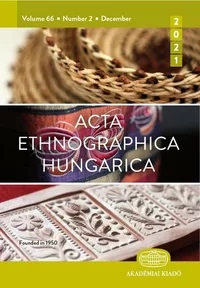A Paradox of Applied Folk Arts. The Contribution of Cooperative Folk Arts to the Construction of the Notion of the Emblematic Creator
A Paradox of Applied Folk Arts. The Contribution of Cooperative Folk Arts to the Construction of the Notion of the Emblematic Creator
Author(s): Bence Ament-KovácsSubject(s): Cultural Anthropology / Ethnology
Published by: Akadémiai Kiadó
Keywords: applied folk art; cottage industry cooperatives; emblematic ethnographic regions; individual artist; pottery
Summary/Abstract: The self-definitions of today's folk artists, as well as the concept(s) of folk art of official umbrella and quality assurance organizations, are rooted in complex, interrelated processes. In my study, I focus on the post-World War II concept of folk art, which is full of contradictions, but, despite all protests, has had an undeniable impact on the folk art of today. The system of applied folk arts paradoxically fostered the prominence of individual creators, in contrast to the communication of its novel cooperatives in the decades after World War II, which emphasized communal work. These creators – often possessing truly authentic folk art knowledge (some having gained their reputation before World War II) but no longer following the peasant way of life – were depicted by the media in rural or bucolic genre situations, thereby heavily aestheticizing the concepts of folk and folk art. At the same time, socialist cultural policy also emphasized their status as artists and creators, making them key figures in the cooperatives' work for decades as lead designers, prompting them to revitalize their local motif stock. At this point, another paradox of the Applied Folk Arts Council's perspective emerges, as the representation of the folk art of emblematic regions can increasingly be seen as the representation of the style of an individual (lead designer or charismatic artist). In my opinion, considering the 19th-century roots of the process, the definition of today's folk artists' products as unique works of art and the profound respect for design skills is rooted in this perspective that focuses on the work of iconic personalities, as I also point out in my case study analyzing Tiszafüred pottery through the work of several generations, a style that was adapted by Sándor Kántor and became known as Karcag pottery.
Journal: Acta Ethnographica Hungarica
- Issue Year: 66/2021
- Issue No: 2
- Page Range: 557-579
- Page Count: 23
- Language: English

